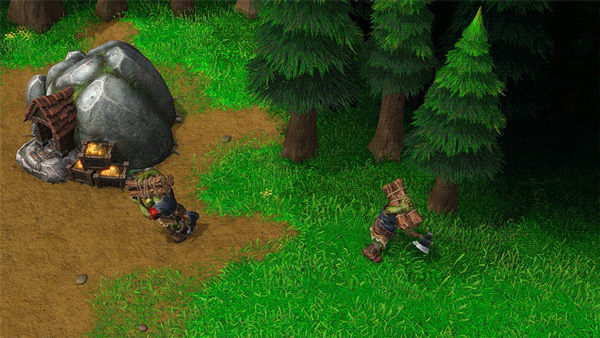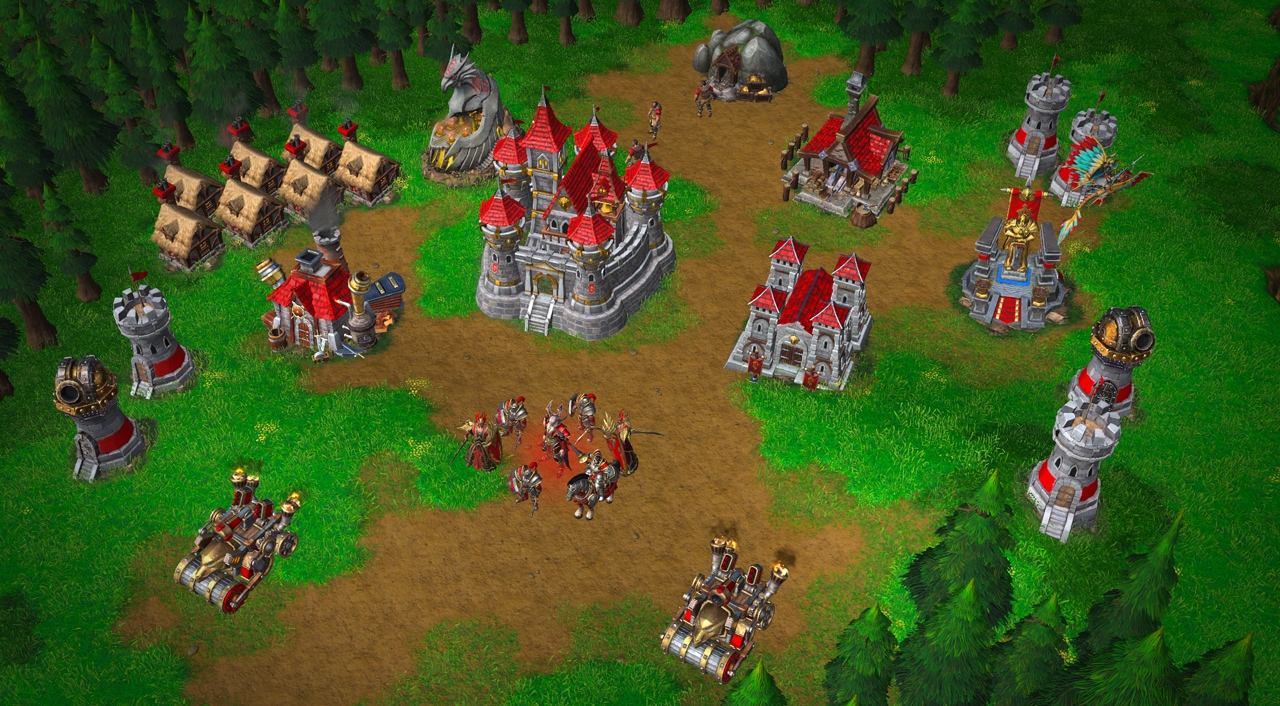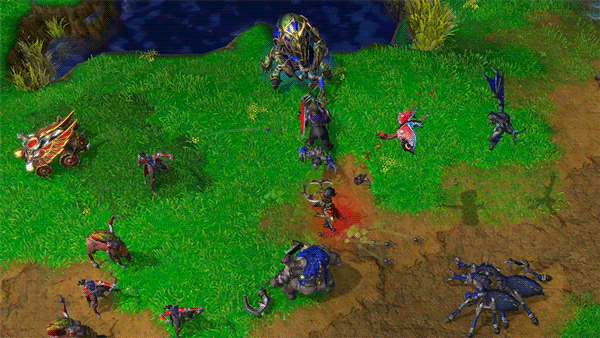Finding the Fun: Real-Time Strategy Games for Beginners
Make more stuff and try not to die…
Sounds like an obvious oversimplification, but maybe it isn’t. Despite the genre’s pretty intimidating reputation, real-time strategy (RTS) games are essentially just a few simple concepts (like making more stuff and trying to not die) crafted into an action-filled but surprisingly approachable package.
The single-player campaign is a great starting point if you’re looking to test the RTS waters. Experience a rich story at a comfortable pace (thanks to difficulty settings ranging from Easy to Very Hard) before deciding if you’d like to delve into the skill-matched PvP modes or cooperative game modes. The various ways to play an RTS, including a wildly diverse pool of user-generated content, allow everyone to live out the fantasy of exploring faraway worlds blanketed in a menacing fog, constructing sprawling bases of otherworldly tech, and commanding massive fantastical armies in a variety of unique ways. Despite the genre’s reputation, sitting down with an RTS doesn’t mean you’re entering an esports training ground. It’s more like embarking on an exploration of a digital sandbox that offers a wide variety of creative and critical decision-making challenges, regardless of your experience level.
First off, let’s get familiar with some basic RTS controls. This part may be boring, but it’s important.
Controls

- Selection and Movement
- Simply left click a unit or structure to view available commands and stats. Once a unit is selected, you can issue movement orders with right clicks or commands by clicking the buttons (or pressing the associated hotkeys) shown on the command panel at the bottom of the screen.
- You can select multiple units at once by clicking and dragging to form a rectangle over them, also known as “box selecting.” When multiple units are selected, you can issue them all commands at once. You can also press Tab to cycle through their individual command panels.
- Control Groups
- After selecting multiple units or structures, you can assign them into “control groups” by holding the Control key and pressing a chosen number on your keyboard. Once assigned, you can quickly select that group again by pressing the same number key. For example, if you’re playing Warcraft III, you can place all your Ancients of War—which produce Night Elf ranged units—in a control group by selecting them and pressing Control + 5. Then you can tap 5 to make more Archers on the fly without taking your eyes off the action.
- Hotkeys
- Learning hotkeys is a useful habit to form if you plan to improve and become a more efficient RTS player, but it’s not strictly necessary as a beginner. Try to familiarize yourself with the default hotkeys on frequently pressed buttons, and don’t be afraid to change them up to fit your personal style.
Once you’re familiar with controlling units and issuing commands, you’ll want to understand some of the basic concepts and strategies inherent to RTS games. Let’s dive in:
Economy

Every match starts with assigning a few provided workers (the non-combat units typically used for gathering and building) to harvest resources your immediate surroundings. After that, you’ll start creating more workers, which will generate more resources, allowing you to invest in advanced structures, more bases, and a powerful army.
Ensuring that you have enough workers efficiently generating resources as you continue to grow your army and base will allow you to create, maintain, and replenish units and structures as needed. This is known as having a good “economy,” and is one of the most easily forgotten but crucially important paths to victory in most RTS matches.
Base Building

Creating a base of unique structures is one of the more satisfying aspects of playing an RTS, but it’s important to consider why you’re building them before making the investment.
Different structures have different costs, build times, and purposes. Town Hall structures build workers and gather resources, others generate units for your army, and some allow you access to upgrades or different unit types. You don’t need to build every structure available to you in a match. In fact, focusing your strategy on just a few unit-producers at first can help you grasp the basics while effectively completing your goal of annihilating the enemy.
Another important concept to learn is “expanding.” To expand in an RTS means to create new bases or outposts outside of your starting area. There’s a finite amount of resources near your starting base, so expanding is necessary to fuel your war effort in extended matches. There’s also the added benefits of increased vision and available space for buildings and army units.
Creating and Controlling an Army

Building a giant sprawling base is cool, but the only way to win a match is to destroy your enemies. To do that, you’re going to need an army.
While there are significant differences between units depending on the game and faction you’ve chosen, a few simple concepts and strategies will remain constant:
- The “Make Lots of Stuff” Strategy
- Finding an inexpensive and versatile unit that you like (Archers, Footmen, Ghouls, etc) and making a ton of them is a completely legitimate strategy, though often only effective early in a match. Make a decent-sized army and throw it at your opponent before they’ve had a chance to realize their more expensive and technical strategies.
- “Teching Up”
- To “Tech up” means to invest in units, upgrades, or structures that have no immediate impact on the match but unlock more advanced units, allowing for more options later in the match. Teching up is often the winning strategy for longer matches, since you’ll have access to more versatile and cost-effective units. However, this strategy is vulnerable to more aggressive moves; so, unless you know exactly what your opponent is planning, try to invest in a small defensive force before deciding to Tech up.
- Striking a Balance in Army Size
- While cool, having a giant army isn’t always the best way to play. StarCraft and Warcraft both put a limit on the number of units you can field at one time through the “Food” and “Supply” cap mechanics. Having more combat units than you need can negatively affect your economy by preventing you from creating more workers, or by forcing you to invest in structures or units that increase your food and supply cap. Striking a good balance is key.
- Offense vs. Defense
- The best defense is a good offense. Heavily investing in defensive units and structures may protect you from attacks but in order to win you need to advance and destroy the enemy’s base. For example, if you’re playing Orcs in Warcraft III: you could completely surround your base in Watch Towers, but this is a significant investment which would limit your offensive unit production, eventually allowing your opponent to overcome you with a superior army or a better economy.
- Fighting the Good Fight
- While there is plenty to be said about the more intricate details of fighting in an RTS, here are some basic rules to remember when your army gets into a skirmish:
- Don’t get surrounded!
- Fighting in an open area can lead to your army taking massive losses with no option to disengage. Use the terrain to your advantage to create choke points.
- Split up your units, if you can.
- Making smaller groups of fighting units, instead of one giant ball, makes your army less vulnerable to AOE (area-of-effect) abilities.
- Melee in the front, ranged in the back.
- Before sending your troops out to battle, try to position your hearty melee units so that they will engage the enemy first and take the brunt of the damage.
- Destroy the means of production.
- If you find yourself in the enemy base (nice!) prioritize killing structures that make units instead of defensive or upgrade-focused structures. This will prevent your opponent from immediately replenishing their army and counterattacking.
- Don’t get surrounded!
- While there is plenty to be said about the more intricate details of fighting in an RTS, here are some basic rules to remember when your army gets into a skirmish:
Scouting and Map Awareness

While lumber, minerals, gas, and gold are important resources in an RTS, nothing is more valuable than information.
After you’ve established your economy and kicked off building a base, you’ll probably want to start scouting to gather information on your enemy. Sending out a cheap unit to explore the map early in the game can net you vital information on the enemy’s location, strategy, and economy. You can use this to prepare appropriate defenses, begin building the ideal counter units, or strike them early if you think they’re vulnerable.
In addition to sending out scouting units, strategically placing units or cheap structures around the map can help you stay aware of the enemy’s movements. Try to keep an eye on your minimap to spot enemy movement so you can prepare accordingly.
With this crash course in RTS basics, you’re now well on your way to dominating the Koprulu Sector, culling Stratholme, or just having fun in some friendly custom matches. Good luck out there!